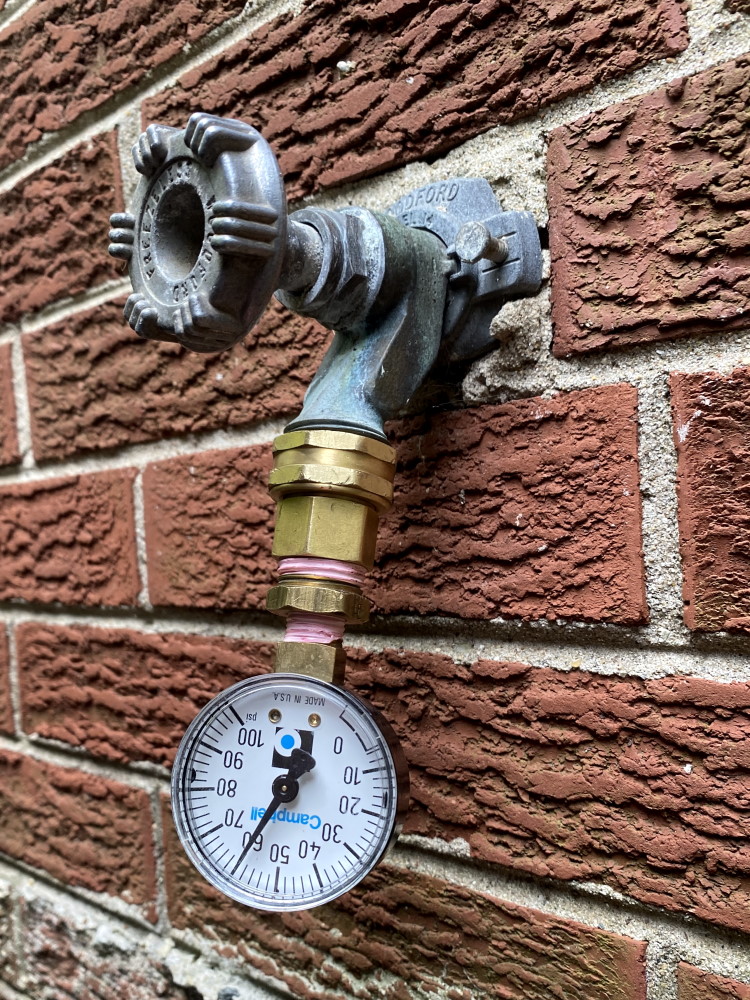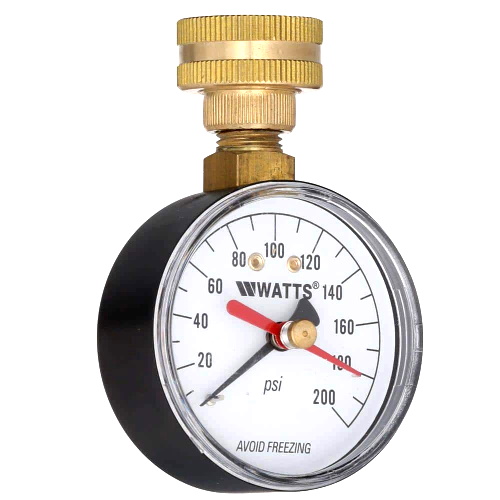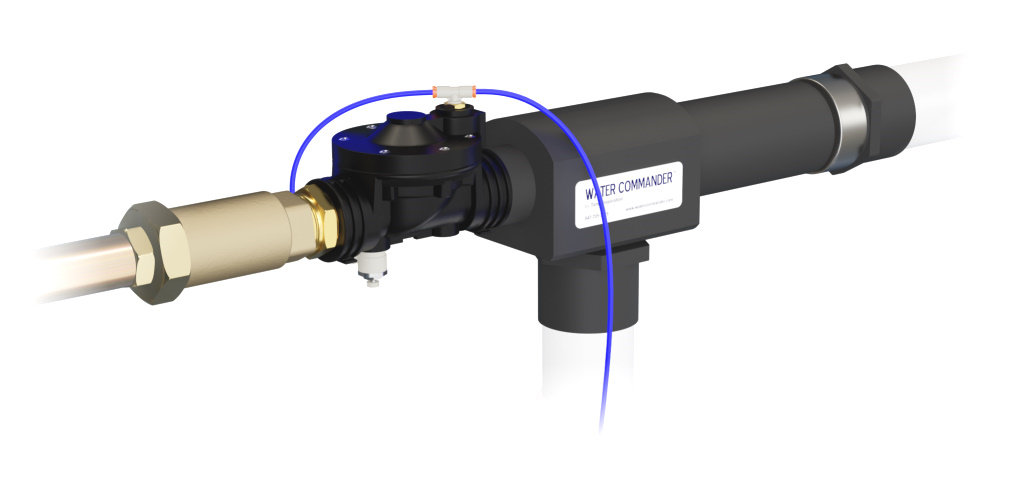Learn how to measure your home’s municipal water pressure yourself.
Before you install a Water Commander™ water-powered sump pump, it’s a good idea to measure your home’s water pressure. That will help you know how much it will pump and also if you have any water flow issues that need to be fixed first.
Water pressure is measured in pounds per square inch (PSI). A typical home will have water pressure between 40 and 80 PSI, although some areas can go even higher than that.
For a general idea of what your water pressure is without doing any testing, you can simply call your local water department and ask them what the pressure is in your neighborhood. They will be able to give you an approximate range.
However, to know exactly what pressure your home has, you’ll need to test it yourself. Fortunately, it’s easy to do.
Steps to Measure Your Water Pressure
Here’s how to test your water pressure:
- Purchase a Water Pressure Gauge online or from your local hardware store. The type to get is one with 3/4″ female hose thread. Some examples include:
- Go to a hose bib outside your home. Connect the Water Pressure Gauge just like you would with a garden hose. Make sure it’s screwed on tight so that no water leaks out when the water is turned on.
- Turn on the water. Wait a few seconds after the initial pressure spike to see what your home’s static water pressure is. If your gauge has more than one needle (a black and red needle), use the black needle. The red needle only shows the peak reading. (This Youtube video shows how to use a gauge with two needles.) A typical range is somewhere between 40 PSI and 80 PSI.
- Leaving the water on at the hose bib, go inside and turn on a tub faucet. Now check to see what your pressure is now. It should drop between 5-8 PSI from the initial measurement. If it drops substantially more than that (20-30 PSI), then you may have a water restriction somewhere in your water line. This restriction is causing a substantial reduction in water flow and is causing the pressure to drop more than normal. Causes for this restriction could be an old gate valve that isn’t opening all the way, a bad pressure reducing valve (PRV), or some other obstruction in the water pipe.

If your water pressure is above 40 PSI even when running another faucet in your house, you have enough pressure to install a water-powered backup sump pump. The higher your water pressure is, the faster it will pump. For Water Commander pumping rates at different water pressure levels, please see our pumping charts.
Use Water Pressure to Pump Out Your Sump
Water Commander™ water-powered sump pumps use your municipal water pressure to pump, instead of batteries or electricity. To learn more about this great backup sump pump solution, visit our website.
We have information on both our pump models, videos showing how it works, and installation information. For a dealer/installer in your area, please contact us and we’ll get right back to you.
Looking for a quality backup sump pump?
Water Commander™ is the best backup sump pump system available on the market today. It’s non-electric, can out-pump your electric sump pump, and will run at full power for years to come.
It is more reliable than battery backups and is the perfect solution for homes with municipal water.
Top Posts
- Water-Powered vs Battery Backup Sump Pumps
- How Long Does a Backup Sump Pump Battery Last?
- Water-Powered Backup Sump Pumps: Ultimate Guide
- How Do Water-Powered Sump Pumps Work?
- How Much Water Does a Water-Powered Sump Pump Use?
Recent Posts
- How To Measure Your Home’s Water Pressure
- Why Is My Sump Pump Not Working?
- How to Prevent Basement Flooding
- Battery Backup Sump Pump Troubleshooting Guide
- My Battery Backup Sump Pump Alarm Won’t Stop Beeping (Fixes)
Categories
Tag Cloud
Alarm Backup Sump Pump Batteries Basement Flooding Beeping Bernoulli Principle Best Sump Pump Check Valves Crawlspace Discharge Pipes Drain Tiles Ejector Jet Float Assembly Independent Discharge Municipal Water Perforated Sump Pits Power Outages Primary Sump Pump Failure Pros and Cons Pumping Charts Pumping Efficiency Pumping Rates Pump Life Span Pump Run Time Pump Testing Radon Gas Suction Pipe Sump Basin Sump Pump Motor Sump Pump Switch Troubleshooting Ultimate Guide Venturi Effect Water Drainage Systems Water Pressure Water Pressure Gauge Water Usage




